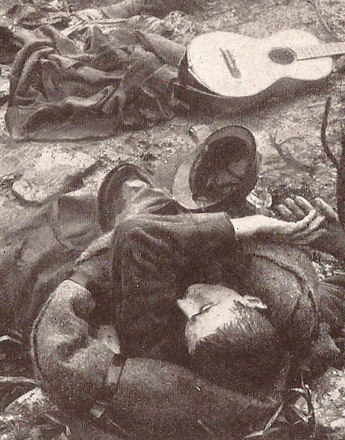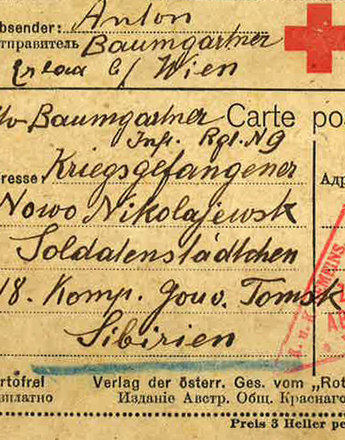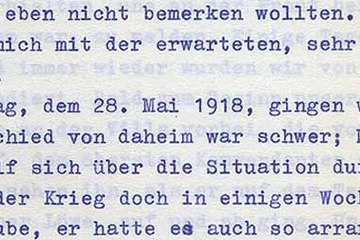The First World War and the law on war in effect
Since the second half of the 19th century, the attempt had been made to create a law on war that was established in written form and generally recognised. Early successes were seen in the years around the turn of the century. The generally accepted law of war around the time of the First World War was formed by the Geneva Convention (1906) and the Hague Land Warfare Convention (1907).
Already prior to the outbreak of the First World War there existed a body of laws that encompassed internationally acknowledged humanitarian international law. It consisted of the Geneva Conventions of 1864 and 1906 – which served to improve the situation of those taking part in war in particular – as well as the Hague Conventions of 1899 and 1907. These international legal agreements were based on a series of preceding attempts at codification. Their significance lay in their universal validity, however, as they were not limited either factually, territorially or legally in terms of enforcement.
The Geneva Conventions were ratified by all subsequent participants in war and thus formed generally recognised law. The Hague Land Warfare Convention (HLWC) contained in the Hague Convention of 1907 was also signed by the most important war-making nations of the First World War. With the HLWC, all laws of war that previously had been only traditional as customary law now received a broad basis founded on international law. From the ‘traditions’ came a comprehensive and generally applicable law of war, in which the ‘general laws and customs’ of land war were laid down in codified form. In the introduction to the HLWC was written that the laws written down there "[…] were motivated by the wish to alleviate the sufferings of war, insofar as military interests permit it, to serve those waging war as a general guideline for their conduct in their relations with each other and with the population."
The HLWC of 1907 encompasses three legal normative complexes: the first defined the regular combatants (soldiers), the irregular combatants (guerrillas) and the non-combatant civilian population. From this there also resulted a special legal and protective status for those regular soldiers taken prisoner by the enemy. With regard to treatment of those injured and wounded, reference was made to the Geneva Convention, according to which prisoners were to be protected and looked after. The second normative complex limited the choice of warfare agents to those ‘harmful to the enemy’. Moreover, it concerned questions of the legitimate besieging and firing upon enemy territory. In this case, it was prohibited to engender unnecessary suffering, to employ toxic materials, to kill defenceless foes, to destroy enemy property unnecessarily, and also to fire upon undefended locations. The third normative complex dealt with the conduct of occupying powers in occupied territories. Here the concern was in particular to protect the civilian population from any arbitrariness and violence. It was forbidden to loot, deport, collectively punish and arbitrarily execute civilians, among other actions.
Despite all the progress made, the Hague Conventions concerning the codification of the law of war also revealed a range of inadequacies. It was meant to alleviate the suffering caused by war, yet this only ‘insofar as military interests permit it’, and it complied with the national expectations of the signatory powers. Two areas in particular showed themselves to be problematic: on the one hand some of the commandments and prohibitions listed in the HLWC enabled relatively broad scope for interpretation; on the other hand specific decrees were lacking that would enable a disciplinary penalty in case of the violation.
Kramer, Alan: Kriegsrecht und Kriegsverbrechen, in: Hirschfeld, Gerhard/Krumreich, Gerd/Renz, Irina (Hrsg.), Enzyklopädie Erster Weltkrieg, 3. Auflage, Paderborn/München/Wien/et al. 2009, 281-292
Überegger, Oswald: „Verbrannte Erde“ und „baumelnde Gehenkte“. Zur europäischen Dimension militärischer Normübertretungen im Ersten Weltkrieg, in: Neitzel, Sönke/Hohrath, Daniel (Hrsg.): Kriegsgreuel. Die Entgrenzung der Gewalt in kriegerischen Konflikten vom Mittelalter bis ins 20. Jahrhundert, Paderborn/München/Wien/et al. 2008, 241-278
Quotes:
"[…] were motivated by the wish...": Haager Landkriegsordnung, Abkommen betreffend die Gesetze und Gebräuche des Landkriegs, 18. Oktober 1907, RGBl. 1910, 109 (Translation)
-
Chapters
- International laws of war. Genesis of a juridification
- The First World War and the law on war in effect
- The Western front. Guerilla poses and war waged on the civilian population
- Russia’s ‘enemies within’. Jewish and German minorities on the Eastern Front.
- The war crimes of the Habsburg army. Between soldateska and court martial.
- War imprisonment. The right "to be treated with humanity"
- Prohibited war material: Dum-dum shells and deployment of gas
- The Leipzig Trials (1921-1927). Between national disgrace and juridical farce







